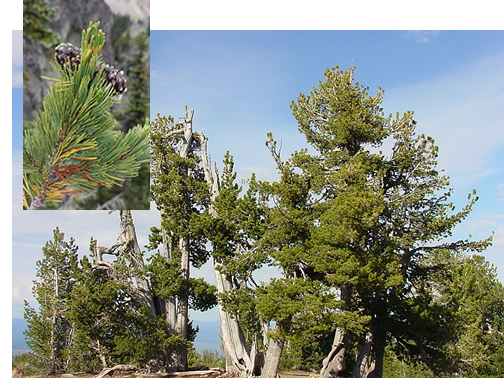
Whitebark pine, one of the West’s iconic and essential species is in danger – so much so that U.S. Forest Service ecologist Bob Keane says there may someday be so few trees “we will probably name the ones we see.”
Officially, the agency and the U.S. Fish and Wildlife Service say the whitebark pine warrants listing as an endangered species and could very well be extinct within 100 years.
So why isn’t the high-elevation species listed as endangered? Is listing the solution to the drastically reduced number of whitebark pines? What will be the impact of climate change? What effect will this summer’s planned delisting of Yellowstone grizzly bears have on the potential whitebark listing?
You get the idea: There are a lot of questions surrounding the species’ fate, and many are explored in a new High Country News story on whitebarks.
Reporter Maya Kapoor hadn’t seen a whitebark pine when she started researching her story, but had Keane as her expert guide.
Soon, she too was a fan: “Researchers have found that whitebark cones feed more than 100 animal species and, in Glacier National Park, 40 percent of the understory plants in whitebark pine communities grow only there. The tree’s fatty, protein-rich seeds are an important food for Greater Yellowstone grizzlies; when the seeds run short, the bears eat more meat.”
Kapoor’s report is important reading. Take a few minutes today to read her work, then let us know what you think.

Leave a Reply